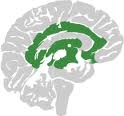


How learners get engaged and stay motivated. How they are challenged, excited, or interested. To tap into learners' interests, challenge them appropriately, and motivate them to learn.
Provide alternatives for motivation
Information that does not engage learners’ cognition, is in fact inaccessible. As a result, teachers devote considerable effort to engage the learner's attention and engagement. But learners differ significantly in what attracts their attention and engages their interest. Even the same learner will differ over time and circumstance; their “interests” change as they develop and gain new knowledge and skills, as their biological environments change, and as they develop into self-determined adolescents and adults. It's important to have alternative ways to motivate student's interests.
Provide options for self-regulation
It is important to design the extrinsic environment so that it can support motivation and engagement, it is also important to develop learners’ intrinsic abilities to regulate their own emotions and motivations. The ability to self-regulate is to take control one’s emotional reactions in order to be more effective at coping, monitoring, and engaging to evaluate one's own learning and behavior– is a critical aspect of human development. While many individuals develop self-regulatory skills on their own, either by trial and error or by observing successful adults, many others have significant difficulties in developing these skills. Important aspects of self-regulation is the personal knowledge of each learner and developing self-assessment and reflection. Merely recognizing that they are making progress toward greater independence is highly motivating.
Examples of methods to engage students and self-regulation strategies
Vary levels of challenge and support to prevent frustration or boredom, tie work to real-world examples, offer choices in how learning objectives can be reached, allow learners to participate in the design of classroom activities and academic tasks such as the decision of classroom rules, provide coaches, mentors, or agents that model the process of setting personally appropriate goals that take into account both strengths and weaknesses, advovcate for high expectations, and offer devices, aids, or charts to assist individuals in learning to collect, chart and display data from their own behavior for the purpose of monitoring changes in those behaviors.
There are a variety of sources that can influence individual variation in affect including neurology, culture, personal relevance, subjectivity, and background knowledge, along with a variety of other factors. Some learners are highly engaged by spontaneity and novelty while other are disengaged, even frightened, by those aspects, preferring strict routine. Some learners might like to work alone, while others prefer to work with their peers.
Applying Multiple Intelligences in a Classroom